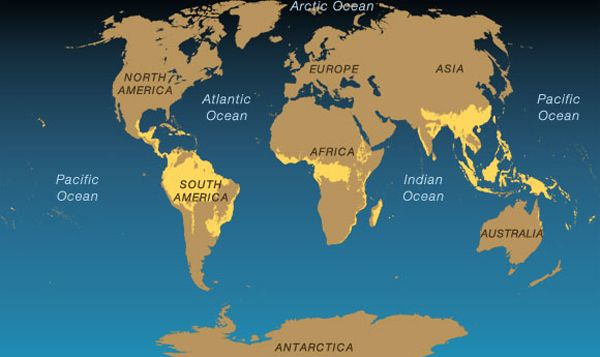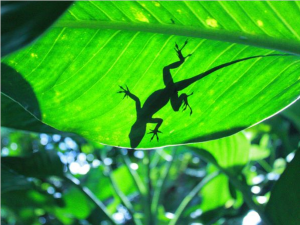Tropical Rainforests: from carbon sink to source?
Tropical rainforests cover 6% of Earth’s surface, but their soils contain nearly 30% of the total global soil carbon stocks, making them one of the most important carbon sinks on Earth. Yet, ironically, tropical rainforests are also the largest natural source of carbon dioxide on Earth. Plant material grows, decays, and makes way for new growth so rapidly within these lush habitats that carbon stocks remain fairly unstable. Still, rates of carbon sequestration generally outpace carbon release in tropical rainforests, allowing them to maintain their crown in the carbon sink-dom.
Now, with preliminary results published in last week’s issue of Nature Climate Change, British ecologist Emma Sayer and colleagues are finding that climate change may dethrone tropical rainforests from their reign in the world of carbon sequestration. Will increasing atmospheric carbon dioxide levels transform this carbon sink into a carbon source?

Atmospheric carbon dioxide naturally fertilizes plants, as plants use carbon dioxide to photosynthesize. With ever-increasing carbon dioxide emissions in the global atmosphere, plant production has already started to increase in some locations, particularly in tropical forests. Increased plant productivity amounts to larger and more abundant leaves. Since leaves suck carbon dioxide out of the atmosphere, increased leaf growth would presumably bolster a given tree’s ability to sequester carbon dioxide. Sayer and her colleagues, however, show that plant-atmosphere interactions are not this simple, and are further complicated by increased carbon-fertilization.
Yes, carbon-fertilized leaves serve as a carbon sink while they are still attached to their respective trees. But, upon dying, they fall to the forest the floor and contribute to a growing pile of dead plant material, or litter. Litter is quickly scavenged by decomposing microbes in the soil that release the once-sequestered carbon back into the atmosphere. This activity is normal, and explains why tropical rainforests are such a large natural carbon dioxide emitter. However, according to Sayer’s findings, increased leaf litter produced by carbon-fertilization may stimulate microbes to decompose more efficiently because leaves are more decomposable than woody material on the forest floor. This ‘priming’ of the microbes with an influx of easily decomposable material could disproportionally increase the net amount of carbon dioxide emitted from a given stand of trees.

Sayer’s study is uniquely long term, with data spanning from 2005 to 2009 . Such long term studies are crucial in detecting plant-soil-atmosphere interactions that fluctuate from season to season and year to year. Similar long term studies have yet to be implemented on other forest types, but Sayer suggests that other forest types will likely experience a similar ‘priming’ effect induced by increased carbon-fertilization. If this is the case, climate models should be tweaked accordingly to better predict future oscillations in forest carbon stocks.
Posted by Laura Poppick, Assistant Editor of Maine Climate News.
